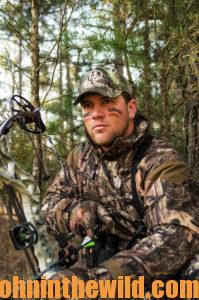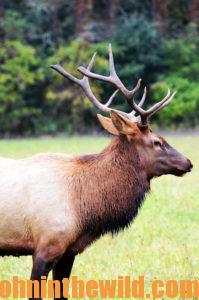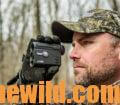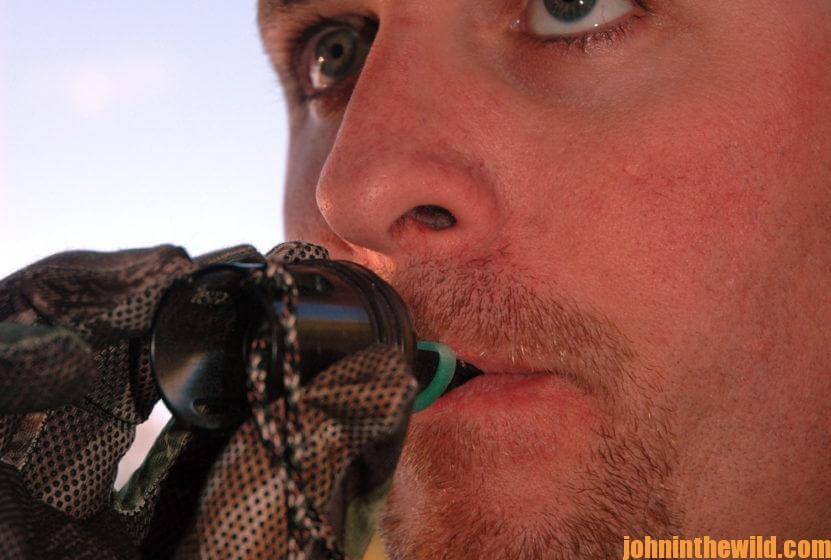Editor’s Note: Mark Land of Cartersville, Georgia, worked for Muzzy Broadheads (https://www.feradyne.com/muzzy-broadheads/) for 20 years. He’s been bowhunting since 1977 and has been big-game guiding for 15 years. “Georgia is where I call home, but sometimes I like to walk the Florida beaches and also guide for Fulldraw Outfitters (https://www.colorado.com/hunting/fulldraw-outfitters) in Augilar, Colorado. I hunt at high altitudes (about 7,000 feet or higher) in the Colorado Mountains, and how we hunt is somewhat different from what flatlanders in the East know.” To learn more about Mark, visit his Facebook page at https://www.facebook.com/people/Mark-Land/100003101287281.
We don’t specifically hunt elk on horseback at Fulldraw Outfitters, but we do have some spike camps where we use horses to get our hunters and their equipment to and from camp. We also use horses to pack the meat out, if an elk is down in an area where we’ll have a difficult time getting a vehicle close to the downed elk. But, we usually don’t have this problem, since we have very-good roads throughout most of the property.
* How We Get the Elk Meat Out:
When an elk hits the ground, we send a call back to the guides at camp to help the hunter get his meat out of the woods. We put a lot of emphasis on getting the elk head and the meat out of the woods and to a processing plant as quickly as possible. With the amount of help we have, and the vehicles we use, we usually get the meat out within no more than an hour or two after the elk is taken.
* What Flatlanders Need to Survive Elk Hunting:
Water is the most-important item that needs to be in every elk hunter’s pack. Sometimes we have a hard time convincing hunters to drink a lot of water while elk hunting because they’re not accustomed to doing that when hunting in the East. Of course, dehydration can cause hunters to have headaches and become weak.
On an all-day hunt, I’ll usually drink two liters of water, which is really not enough. If we’re going to be out all day, I encourage my hunters to carry as much water as possible in their packs – hopefully 4-6 bottles of water. Some of our hunters bring LifeStraws (https://www.lifestraw.com/) – water-filtering systems they can drop in a stream to get some drinks. However, the areas we hunt in are very arid, and there isn’t much water available in our streams or creeks. Almost all of the water on our land comes from man-made ponds or ditches.
 We also suggest that all of our hunters wear daypacks or fanny packs. Our hunters don’t need frame packs since we don’t typically spend the night out in the mountains. One of the worst things that an elk hunter can do is bring a lot of stuff he or she doesn’t need. Another important item to bring is a poncho because you never know when rain will happen.
We also suggest that all of our hunters wear daypacks or fanny packs. Our hunters don’t need frame packs since we don’t typically spend the night out in the mountains. One of the worst things that an elk hunter can do is bring a lot of stuff he or she doesn’t need. Another important item to bring is a poncho because you never know when rain will happen.
High-carbohydrate snacks are also very-important items to have as opposed to snacks with high- sugar content. Sugary snacks may give you a burst of energy, but as soon as the sugar gets out of your system, you’ll probably be worse off than before you ate the snack. For the most part, we provide all of the snacks that the hunter will need at camp such as granola bars, dried fruit, honey and nuts. If we’re going to be out all day, we have sandwiches made that can be carried in our packs with some kind of fresh fruit. I usually check all of my hunters at camp to assure tha t they have plenty of water and the right kinds of snacks. 
To learn more about elk hunting, check out John E. Phillips’ book, “How to Find Your Elk and Get Him in Close,” available in Kindle, print and Audible versions at http://amzn.to/17ENNqK
by copying and pasting the click into your web browser.
Tomorrow: What an Elk Guide Carries in His Pack with Mark Land










